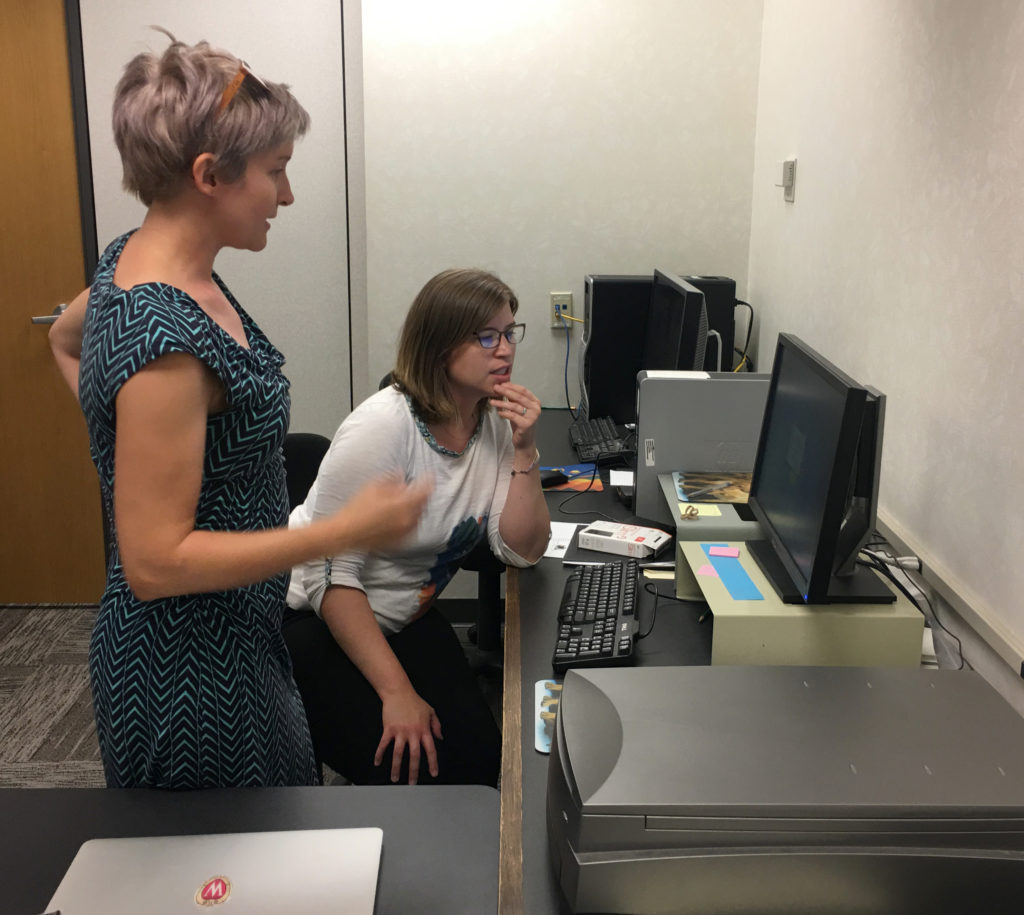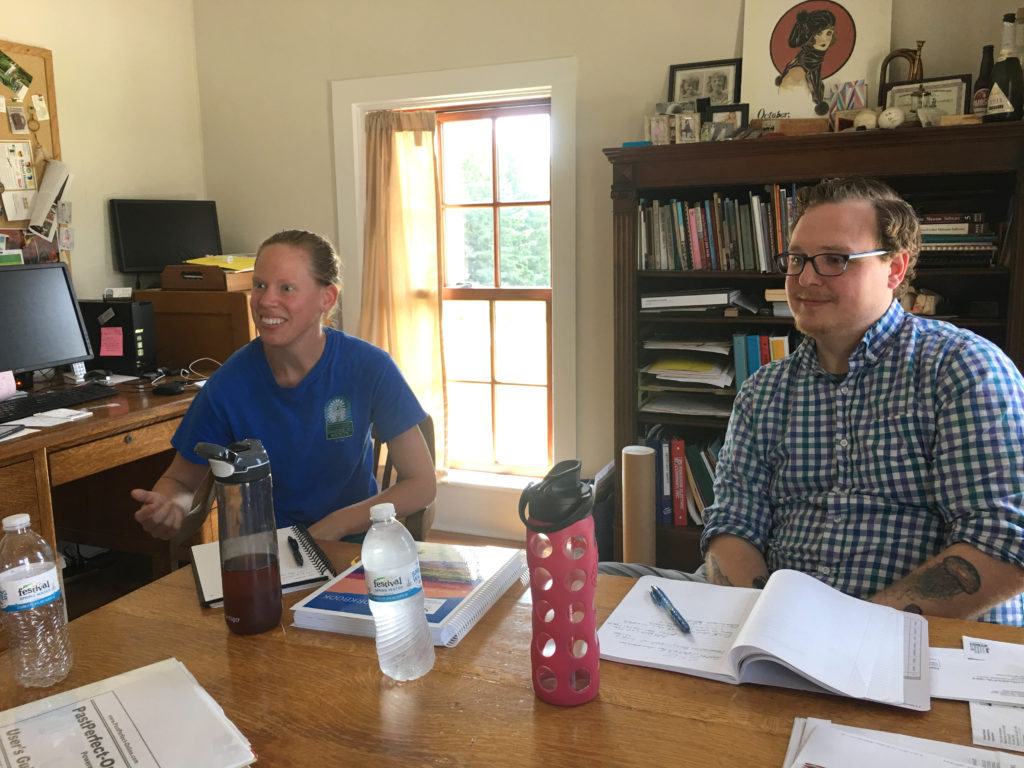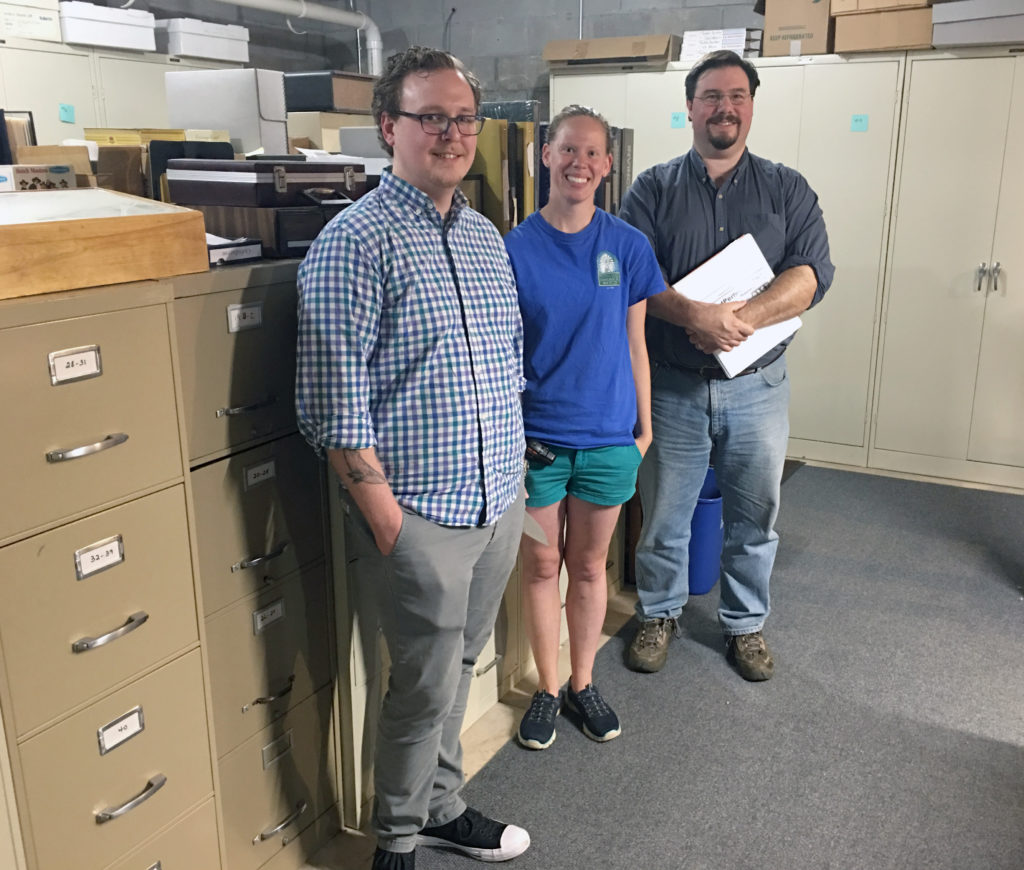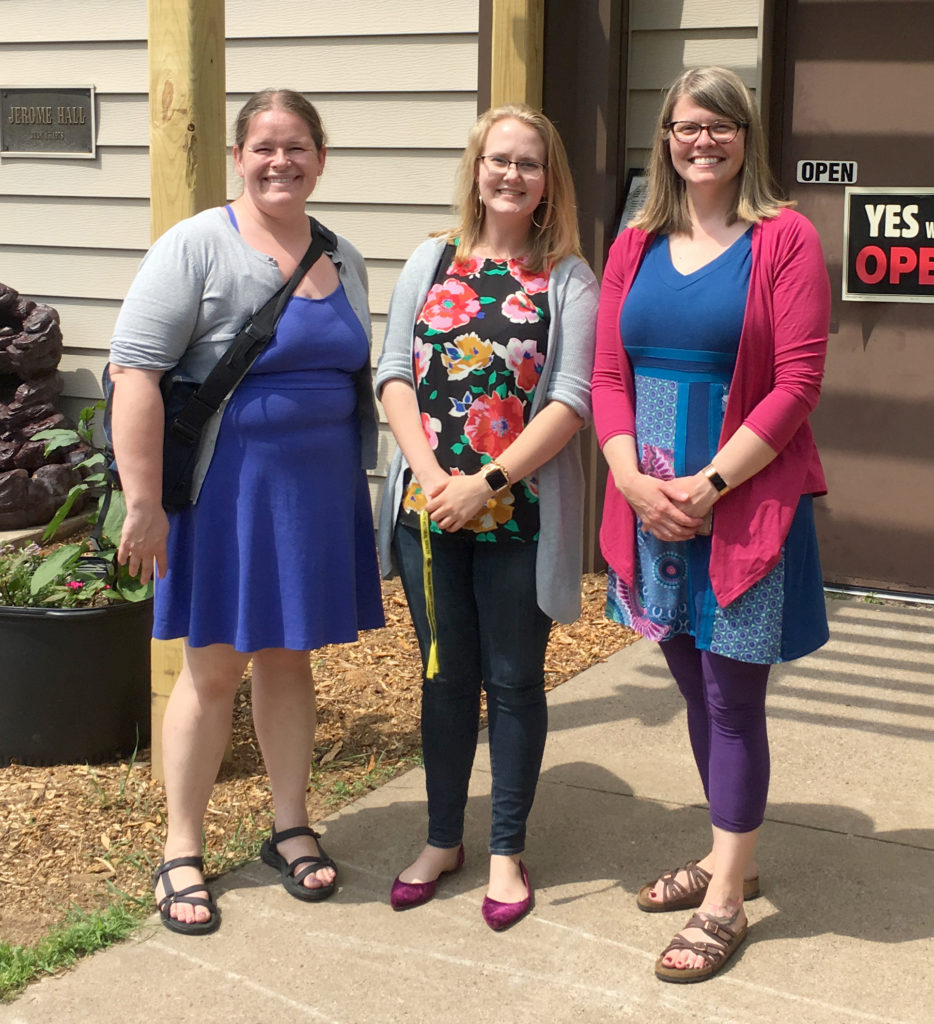This month, I am thrilled to be visiting each of our Curating Community Digital Collections (CCDC) host sites for an extended check-in with each team. It’s been almost two months since our immersion workshop in Madison where we introduced CCDC participants to basic digital preservation concepts and best practices, tools and workflows for preservation tasks, and developed detailed project plans for the summer. It’s time to see what they’ve been up to in recent weeks.
Last week, I met with three of our six teams – La Crosse Public Library Archives, Barron County Historical Society and Manitowoc County Historical Society. Our dedicated host site supervisors, mentors and practicum students gathered to review their project plans and progress to date. Each CCDC host site is working through a series of activities that will provide a strong foundation for advancing their digital preservation work. These activities include but are not limited to:
- creating an inventory of digitized or born-digital content
- evaluating and updating existing file and folder organization
- using a file-renaming tool to create a standardized file naming scheme
- reviewing existing digitization and metadata best practices and workflows and making recommendations for improvement
- establishing file fixity information and checking file integrity
- evaluating existing storage solutions for digital content and implementing improvements
- creating a digital preservation policy and related documentation
Each project has additional tasks specific to their local collections and digital preservation challenges. These include oral history content creation and management, evaluating and improving existing PastPerfect workflows, working with color targets to improve digital image quality, and developing training materials to share with current and future staff and volunteers.

Our conversations touched on some interesting questions, challenges and creative solutions unique to each institution. Once again, I am impressed by the collective brain power of this group!
La Crosse Public Library raised an intriguing question – how to efficiently rename image files when extensive descriptive metadata is part of the file name itself? You all know what I’m talking about – JaneSmithFamilyFarmUncleBobDaneCounty1910.jpg – or something akin. Is there a decent tool that automates extracting and saving file name information before renaming the file? And, if so, what is a sensible workflow for this process – extract data first, then rename? Renaming files “by hand” is time-consuming and may result in user error.
Without question, Manitowoc County Historical Society has the ultimate “safe” storage plan for their digital content, as they plan to store a copy of their images and data on an external hard drive in their county sheriff’s vault. What an excellent opportunity to build community awareness of and support for their digital preservation work. It doesn’t hurt that MCHS maintains a small collection of historic materials that document law enforcement work in their county.


Barron County Historical Society is making great progress wrangling their workflows including digital file organization and naming standards. “Consistent inconsistency” is how BCHS staff good-naturedly described past efforts. I think anyone who has worked with digital cultural heritage collections can appreciate that challenge, especially when attempting to understand and retain legacy file names that include pertinent collection data such as an accession number or provenance information.
Another intriguing question raised by the Barron County team – how to set preservation priorities for different versions of the same digital file when they are all derivatives of an original analog item not held by the institution? How do you decide which to preserve? All of them? One or two copies? How do you discern the “best” derivative to preserve?

Finally, we reviewed some of the key concepts from our Immersion Workshop including the “3-2-1 rule” for storing digital content: keep at least three copies of any important file on at least two different types of storage media, with one copy in an offsite location.
We explored strategies for creating a useful digital preservation policy. An excellent resource to guide this work comes from the Sustainable Heritage Network, Developing a Digital Preservation Policy. This short document delineates eleven categories of content to include in any policy. I highly recommend this as a policy framework. It’s a great starting point for this work, even if you don’t have all the answers fully articulated. We also identified the need to include a glossary that defines local terminology used in digital preservation work. For example, “conversion workflow” might be interpreted differently by someone not familiar with an institution and its processes.
In closing, we briefly reviewed milestones related to digital preservation work and celebrated pending arrival at various NDSA preservation levels, at minimum level one achievements – “know what you have, check what you have, lock down access and store your stuff”.
Witnessing the time and effort CCDC program participants have put into this seemingly daunting task – developing and implementing a digital preservation strategy – is, quite frankly, inspiring. It’s remarkable what can be accomplished within a summer of collaborative work, creative problem-solving and good humor. Well done, all!
— Posted by Vicki Tobias, CCDC Program Coordinator, WiLS
Curating Community Digital Collections is supported by a grant from the Institute of Museum and Library Services, #RE-85-17-0127-17.



